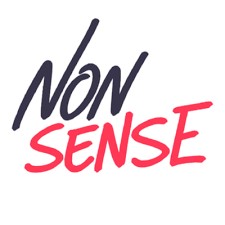
Today, Bambi came across Ms. Sophie Durocher’s article about the Musée de la civilisation du Québec, which was recently published in the Journal de Montréal (https://www.journaldemontreal.com/2022/07/27/le-sexe-dans-tous-ses-etats). In all honesty, she does not know if she should smile or be disappointed by how collectively absurd, our highly divided, our societies seem to look like… ironically in the name of a so-called ideology entitled “Diversity, Equity, and Inclusion“. The latter has become the obsession of our governments and public institutions.
For Bambi, what is particularly disappointing about Ms. Durocher’s informative article is that the museum in question is located in Québec, which is a Canadian province that usually knows how to resist to political correctness or woke or identity-based ideas. Indeed, Québec has traditionally been an open-minded and welcoming society where citizens benefit from legally protected rights under this province’s own Charter of human rights. So, why does it need new blahblahblah all of of a sudden? Why should we put people in categories and sub-categories like this? Do they truly feel more included when we do so? And included in what? In a highly fragmented place? Since when the latter is better than a dynamic and truly pluralistic society? Stated differently, and pushed to the extreme, can political correctness backfire one day? Or could it become even more toxic and definitely divisive?
Anyhow, before sharing the translated article with you, Bambi was curious about the funder(s) of this museum. She learned that the main funder is Hydro Québec, which is a Crown corporation, that is a state-owned entreprise (https://www.mcq.org/fr/). However, it is unclear if the new initiative in question, with its rather odd language, independently stems from the museum’s managers or is encouraged by the financial partner.
Of course, Bambi respects the sincerely noble intentions that people, perhaps like you reading this post now, have about diversity and inclusion. However, with all due respect, the linguistic style of the museum’s initiative (quoted in Durocher’s article) seems to be intellectually poor and socially divisive with its cumbersome categories and sub-categories.
Anyhow, Bambi will stop here to share Ms. Durocher’s article, thanks to her faithful friend Mr. Google Translate. Mind you, you may wish to use your critical thinking to build your own opinion about this topic. You may agree or disagree with Ms. Durocher or Bambi. If you wish, you are welcome to post a comment on this blog.
“Recently, in my columns, I spoke to you about the woke excesses of the Museum of Fine Arts of Canada [for an English translation, you can read Bambi’s older post shown further below].
But a reader wrote to me to draw my attention to another Museum that has some, shall we say… intriguing plans.
SEX AT THE MUSEUM
Since June 14 and until August 31 of this year, the Musée de la civilization de Québec has launched a “call for objects and archives” which I will copy to you in full here.
“The Musée de la civilization is looking for objects that can document the multitude of experiences related to gender identities and how these are transformed over time and according to cultures, in Québec and elsewhere. »
“We call on people of the plurality of genders and sexual diversity to help us collect different objects that evoke the realities of the following communities: Intersex people, binary and non-binary trans people. Trans sex workers. Neurodivergent trans people. Two-Spirit, intersex and trans artists. Racialized trans people involved in ballroom circles. Polyamorous trans people. Trans people involved in Kinks communities. Trans parents. Trans and creative kids. Trans people active in the trans and transfeminist movement in Quebec in the years 2000 to 2020. Indigenous and Two-Spirit LGBT+ people. Black, racialized, immigrant or refugee LGBT+ people. LGBT+ people who live in or come from the regions of Québec. LGBT+ activists active in the 1960s to 1990s” .
“Activists active within the radical feminist, lesbian feminist and queer feminist movements in Québec in the 1960s to 2000s.”
I hope the Museum has ensured that its list is comprehensive and that no subgroup of “People of Multiple Gender and Sexual Diversity” has been overlooked.
And I wonder what an “object that represents the realities” of “trans people involved in Kinks communities”.
VAGINA OWNERS?
Another of my columns that made you react is the one on the use at Radio-Canada [the French CBC] of the words “people with a uterus” instead of the word “women”.
Several readers who have had a hysterectomy or were born without a uterus have written to me to tell me how shocked they are.
“Should I be called ‘person who no longer has a uterus’? “, wrote me one of them.
A reader also told me that on July 18 on the program Le 15-18 on Radio-Canada, about women’s breasts, the host said:
“While it’s legal for everyone to walk around topless, it’s still not quite accepted in the general population that ‘people with fuller breasts’ don’t hide them.”
Her guest, Myriam Daguzan-Bernier, sexologist, replied: “There are as many different breasts as there are ‘people who have breasts’ on the planet”.
Finally, did you know that the Women’s Centre of Montreal wrote on Facebook on July 13 that “the HPV vaccine can be given to vagina owners between 9 and 25 years old and to penis owners between 9 and 26 years old”?
Here is a nice vocabulary suggestion for our friends from Radio-Canada [the French-speaking CBC].
—
